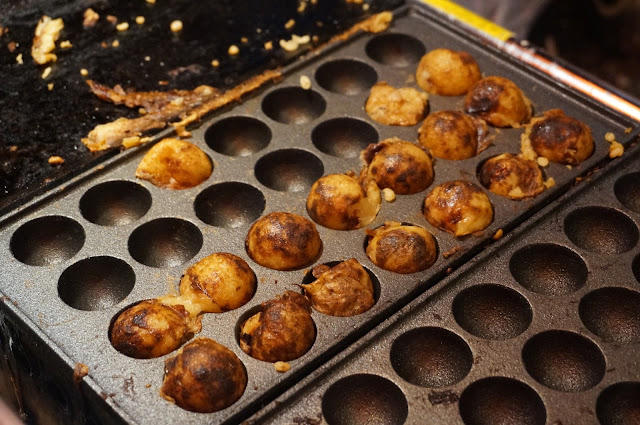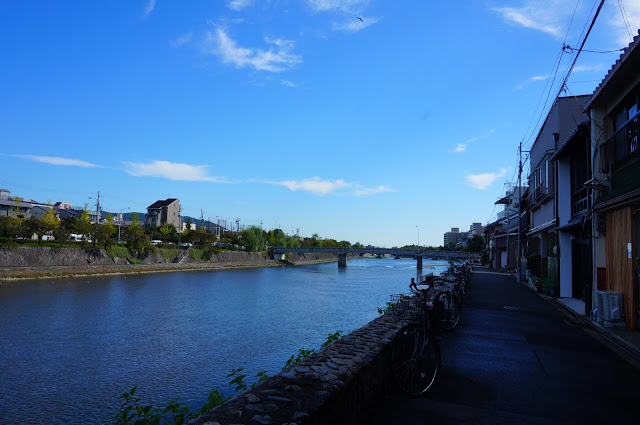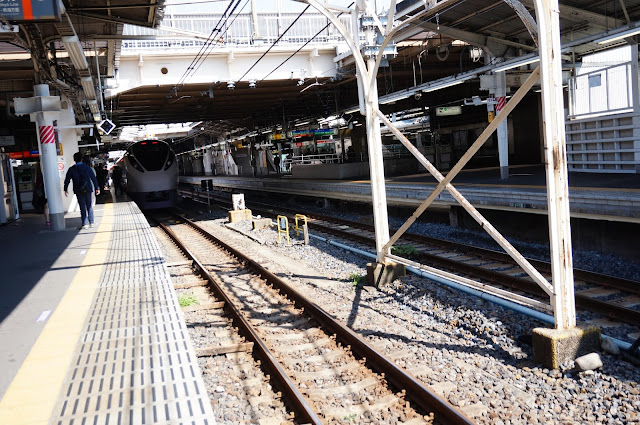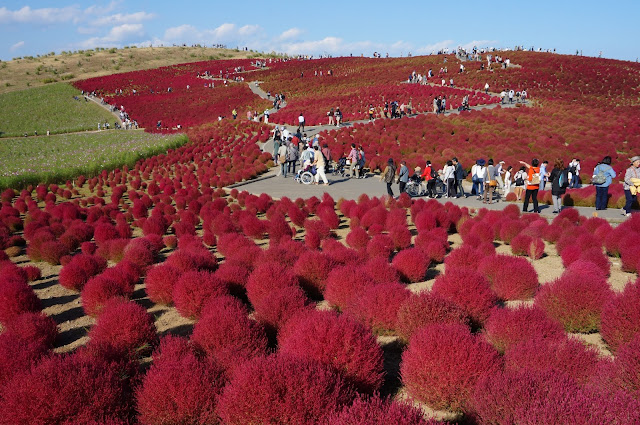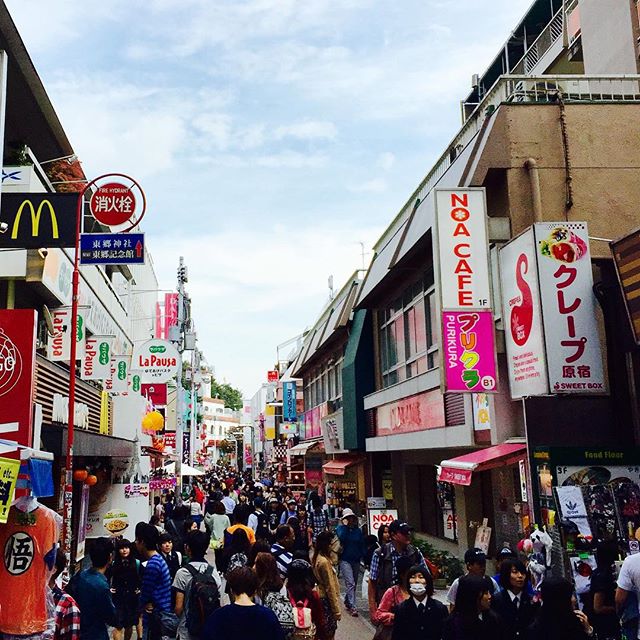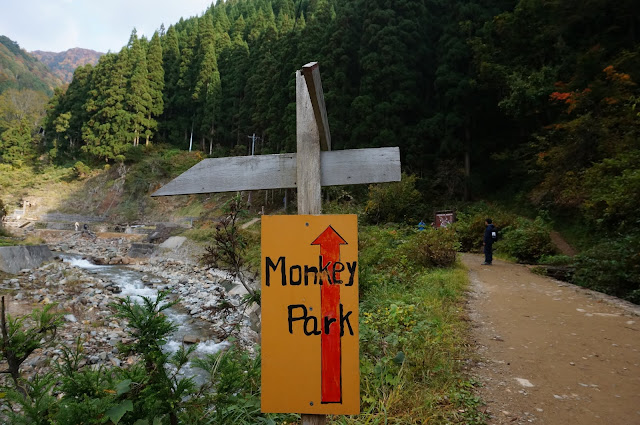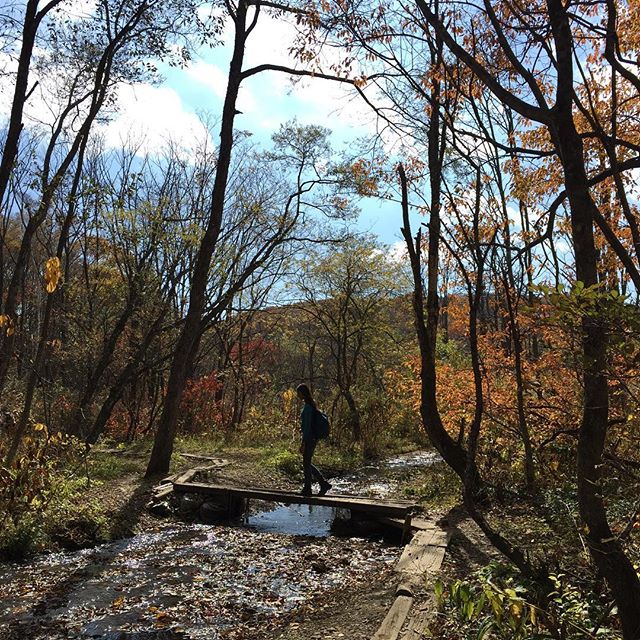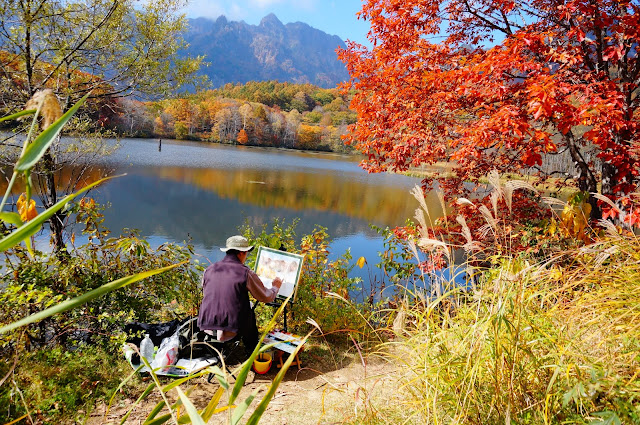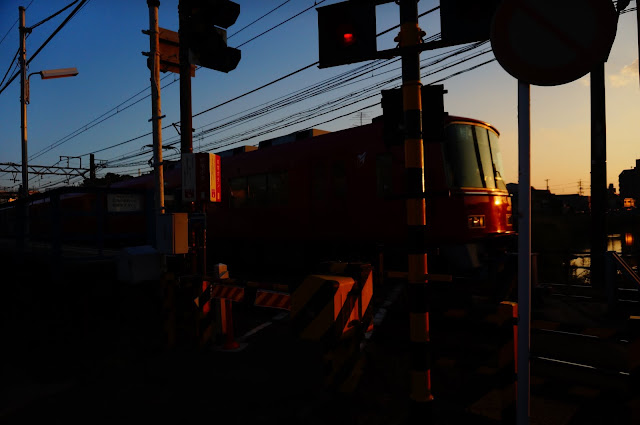Itinerary
Osaka: First glimpse of the country and solo exploration
Day 1 - Arrive at Kansai International Airport (KIX) via Cebu Pacific. Take the Nankai Airport Limited Express to Shin-Imamiya Station. Check-in at Backpackers Hotel Toyo. Look for a midnight snack
Day 2 - Purchase breakfast from Family Mart. Explore Osaka by walking randomly starting with the Shinsekai area. Manage to get to Umeda, the shopping and business center of Osaka. Get on a train back to the hostel before the stations close.
 |
| Known as Osaka's most dangerous neighbourhood, Shinsekai is my first glimpse to culture in Japan -- entertainment, restaurants, streets, order |
 |
| I bought an Osaka One Day Pass which gave me unlimited rides on the subway for only 800 yen -- a good deal since each ride average 200 yen |
 |
| Osaka Castle, which is safeguarded by an inner and an outer moat, deserves a half-day visit along with its expansive park |
 |
| Large and fresh seafood at the Kurumon Ichiba Market which is known among locals as "Osaka's Kitchen" |
 |
| Funky finds for bicycle enthusiasts at the Giracha Coffee shop all while sipping espresso and interacting with other customers |
 |
| One of the landmarks of Osaka, Glico man never fails to reach that finish line |
Kyoto: More like-minded people and chill-outs by the river
Day 4 - Take the Hankyu Railway to Kyoto Kawaramachi Station. Check-in with host. Explore Central Kyoto starting with Kyoto Tower, Kyoto Yodobashi, and then Kyoto Station. Have a fast-paced salaryman dinner at Ohsho (not sure about the name) on the way back from Kyoto Station. Enjoy a beer session along the Kamogawa river alongside high school students and other locals.
 |
| For a city that is steeped in history and wooden structures, Kyoto Station is ironically very modern and characteristically steel |
 |
| The Kamo River, or Kamo-gawa, which literally means "duck river", is a popular walking and hang-out spot for residents and tourists alike |
 |
| With a good selection of ramen and full seats, Ramen no Kaze serves a flavorful broth plus the best Chashu I had -- crispy exterior and tender interior |
 |
| Pathways run along the riverbanks where people normally walk, jog, or bike while some sit and lie down on the grass |
Day 6 - See the 1,001 Kannon statues in Sanjusangen-do, or Rengeo-in. Hunt for a cheap conveyor belt sushi restaurant for dinner. Spot for a real geisha (and we did see one!) in the Gion district.
 |
| The longest wooden structure in Japan, Sanjusangen-do is home to 1,001 statues of the goddess of mercy (no cameras allowed inside) |
 |
| Tamago Nigiri Sushi on the belt waiting to be picked up for 108 yen (roughly Php 40) |
Day 8 - Board a JR Train to Saga Arashiyama Station from Kyoto Station. Decide whether to rent a bike or to get a sweet snack or both or neither. Walk through the Bamboo Forest up to the lookout point. Walk down to the river, across Togetsukyo Bridge (or Moon Crossing Bridge), and up to the Kameyama-koen Park (Monkey Park). Watch the monkeys play around while contemplating what to get for a late lunch. Discover that the cheap meals are sold out at the convenience store and resolve by getting a Ton-katsu meal at an unfortunately unfriendly restaurant. Ride the train back home and get some rest. Go out again in the evening solo to contemplate some more about life by the Kamo river while munching on Onigiri and enjoying the cold weather.
 |
| The Oi River sits beside Arashiyama, or the Storm Mountain |
 |
| Over 170 monkeys at the Iwatayama Monkey Park have become accustomed to human visitors |
Day 10 - Rent a bicycle for a DIY bike tour of Kyoto. Cycle east to the Higashiyama District, passing by the Gion district and stopping at Honen-in. Resume biking, going towards the direction of stereotypical male high school students, passing by high schools and a couple other temples, and turning to random interesting paths until a dead end of stairways. Carry bicycles up the stairs to a new road where other tourists are also walking around. Resume biking without a specific destination and stop at vacant temples hidden behind ancient trees and falling leaves. Resume biking again and somehow end up at Ginkaku-ji. Stop for a matcha ice cream break and decide that the 500 yen entrance fee to the temple grounds is not worth it because it is almost closing time. Resume biking along the parallel road to the Philosopher's Path to avoid the crowd and then head west away from the Higashiyama District. Attempt to drag bikes uphill along a deserted path strewn with dead leaves with the hope of an exhilarating downhill ride, a sunset scene, and a view of the city lights. Abort mission after confirming the endless flight of stairs from passers-by and because an army of mosquitoes has been eating us up. Resume biking westward again and eventually end up at the expansive Imperial Palace. Cycle inside and come out at the north gate to cycle northward along the Kamogawa River. Cycle back to the Higashiyama District for a quick Okonomiyaki dinner. With 15 minutes left, rush back to the bicycle rental shop, taking advantage of downhill slopes and staying as safe as possible.
Day 11 - Sit down at a cafe to get some work done and to organize plans. Send off one of the housemates at Kyoto Station. Purchase meals and snacks at a discount from Isetan's closing sale. Fall in line at the JR Office for the JR Pass Exchange.
Day 12 - Get up early and run to Lawson 100 and then to McDonald's. See the bright orange gates of the Fushimi Inari Taisha Shrine. Watch the sunset from the Kiyomizu-dera Temple. Start packing my bags for tomorrow's departure. Get takoyaki and beer then head to the river one last time for a final session of life talks, adventure stories, and travel plans with housemates.
Day 13 - Get up at 6am to catch the first Shinkansen going to Nagoya and miss it by 10 mins. Arrive at Nagoya Station one hour later, walk 20 mins to the hostel to avoid a 200 yen train ticket, and meet up with Filipino friends. Take the train back to Nagoya Station, take a second Shinkansen to Numazu, and then transit to Gotemba for a view of Mt. Fuji and a touristy lunch stop.
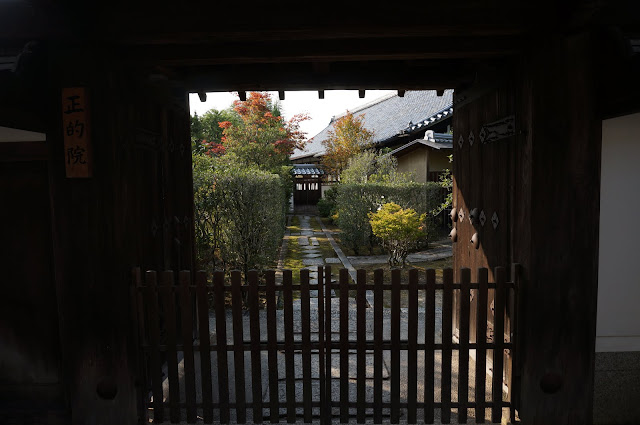 |
| A peak to the moss-covered pathways and manicured flora of Honen-in |
 |
| An army of high school students marching home from end of school |
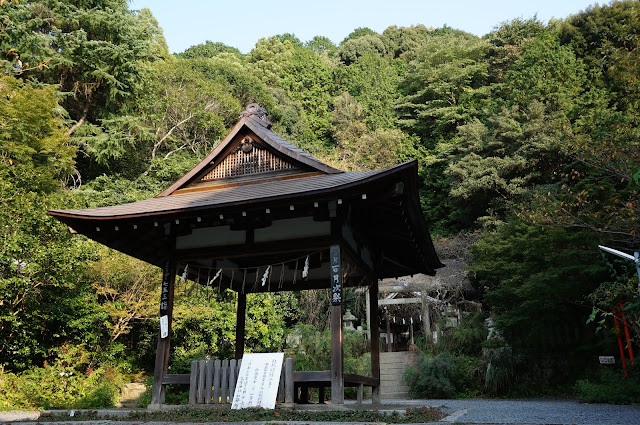 |
| An unnamed temple with zero tourists hidden at the foot of the mountain |
Day 12 - Get up early and run to Lawson 100 and then to McDonald's. See the bright orange gates of the Fushimi Inari Taisha Shrine. Watch the sunset from the Kiyomizu-dera Temple. Start packing my bags for tomorrow's departure. Get takoyaki and beer then head to the river one last time for a final session of life talks, adventure stories, and travel plans with housemates.
 |
| The bright orange wooden gates stand out against the background of trees and swarm of people |
 |
| Take-away takoyaki from that standing bar that we always pass by and which is mostly full of locals |
Nagoya: First Shinkansen and detour to Mt. Fuji
Tokyo: Travel with companions, and a lot of walking, biking and taking the train
Day 13 - Arrive at Tokyo via a third Shinkansen and check-in at selected Airbnb accommodation. Go out for dinner and then go around nearby spots of interest such as Senso-ji, Don Quijote, and Sumida River.
Day 14 - Rent a bicycle and cycle through spots in Tokyo starting with the Tsukiji Fish Market. Fall in line for 30 mins to Yamazaki Sushi. Cycle to Tokyo Imperial Palace via Ginza and then lie down on the grass while imagining what the place was like a century ago. Resume cycling, passing by Roponggi Hills, stopping at a bike shop for some parts and then at a 7/11 for pre-dinner, and arriving at Hachiko's statue in Shibuya. Leave bikes at a parking lot and walk around Shibuya to look for a good dinner place. Take a train to Harajuku Station then walk back to Shibuya Station. Pick up the bikes, fold them into a bag, and then drag them to the train back to Asakusa.
Day 15 - Buy bread from the local bakery because it smells nice and then get a salaryman brunch from Yoshinoya. Take a train from Ueno Station to Katsuta Station and then a bus to the Hitachi Seaside Park. Wander around the park while wondering at the colorful flowers, burning red bushes, and ever green grass. Opt to walk 4kms towards the nearest train station instead of waiting in line for the bus back to Katsuta Station. End up walking until dark and waiting at a deserted, poorly lighted station for a train ride that costs 170 yen more than the bus. Starve and get stranded on the Shinkansen back to Tokyo because someone decided to jump on the railroads. Get a feel-good dinner of gyoza and ramen once back at Asakusa.
Day 16 - Decide to stay in Tokyo for another night instead of heading out to Nikko. Look out for cosplayers along Takeshita Dori in Harajuku. Enjoy some specialty coffee at Omotesando Koffee. Window-shop at the high-end local and global boutiques in Omotesando and Shibuya. Gaze at the electronic displays, girls in maid costumes, toys, and crowd in Akihabara.
Day 17 - Take another Shinkansen from Ueno to Nagano Station. Transfer to the subway and get off at the last station at Yudanaka. Be greeted by an elderly man who just wants to practice his English. Check-in at Yudanaka Seifuso to quickly put down bags and then rush off to Jigokudani Yaen-koen Park (Snow Monkey Park). Walk 2kms along the Yumichi Natural Trail while munching on Almond Chocolates because we didn't have time for lunch. Watch the macaque monkeys as they chase each other around, forage for seeds and flowers, and lie on their bellies. Walk 4kms back to avoid the 500 yen bus ride and also to explore the mountain town. Enjoy a warm dinner of rice bowls and noodles at a restaurant with a poorly kept kitchen and manned by a single cook/waiter/cashier/cleaner. Soak at the indoor and outdoor onsens which are fortunately unoccupied and beautifully strewn with floating apples. Get up suddenly at midnight and crave for a walk and a snack at the only convenience store in town.
Day 18 - Enjoy one last dip at the onsen before catching the hourly train from Yudanaka Station. Get off at Suzaka Station and check-in at Guesthouse Kura, a 100 year-old traditional Japanese house. Enjoy a late lunch of Sukiyaki and Katsudon at Matsubaya. Walk around the quiet town of storehouses and watch the sunset from Garyu Park. Hunt for the only 7/11 in town to get cash then get some dinner also.
Day 19 - Get up early and take a train back to Nagano Station. Drop bags at a locker rental and pick-up bento boxes from a convenience store. Board the Togakushi Bus and get off at the Okusha Shrine stop (second to the last stop). Act like ninjas and battle trap doors at the Ninja House. Hike amidst ancient trees and falling leaves to Okusha Shrine and then to Kagami Ike. Marvel at the varying shades of orange and green while munching on onigiri which was a gift from a friendly bus-mate. Head back to Chusha Shrine and hunt for a Soba Restaurant. Chance upon an empty one and make friends with the cook who works as a ski lift operator on winters. Head back to Nagano Station to pick up bags and board the Limited Express Shinano to Nagoya.
Day 14 - Rent a bicycle and cycle through spots in Tokyo starting with the Tsukiji Fish Market. Fall in line for 30 mins to Yamazaki Sushi. Cycle to Tokyo Imperial Palace via Ginza and then lie down on the grass while imagining what the place was like a century ago. Resume cycling, passing by Roponggi Hills, stopping at a bike shop for some parts and then at a 7/11 for pre-dinner, and arriving at Hachiko's statue in Shibuya. Leave bikes at a parking lot and walk around Shibuya to look for a good dinner place. Take a train to Harajuku Station then walk back to Shibuya Station. Pick up the bikes, fold them into a bag, and then drag them to the train back to Asakusa.
Day 15 - Buy bread from the local bakery because it smells nice and then get a salaryman brunch from Yoshinoya. Take a train from Ueno Station to Katsuta Station and then a bus to the Hitachi Seaside Park. Wander around the park while wondering at the colorful flowers, burning red bushes, and ever green grass. Opt to walk 4kms towards the nearest train station instead of waiting in line for the bus back to Katsuta Station. End up walking until dark and waiting at a deserted, poorly lighted station for a train ride that costs 170 yen more than the bus. Starve and get stranded on the Shinkansen back to Tokyo because someone decided to jump on the railroads. Get a feel-good dinner of gyoza and ramen once back at Asakusa.
 |
| Could these be the burning bush that Moses saw? |
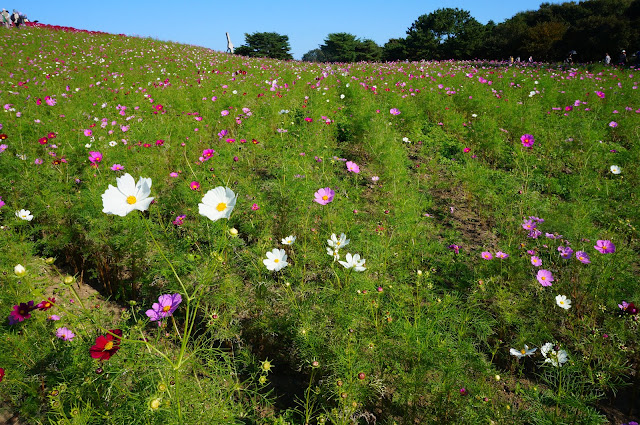 |
| Orderly rows of flowers and greens |
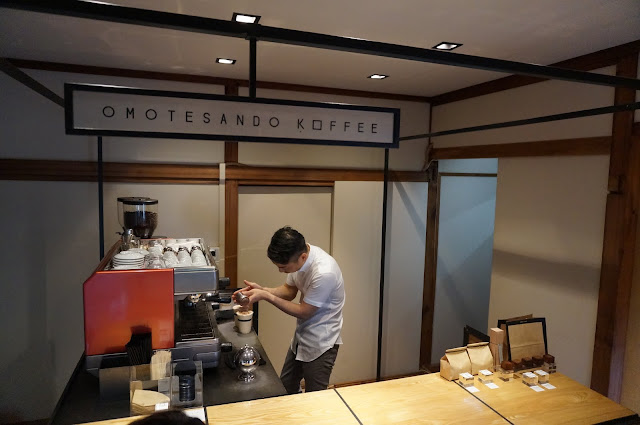 |
| Coffee and drinks prepared with passion and precision, every time |
Nagano: Mountain towns, autumn leaves, apple orchards, and ancient trees
 |
| A short 2km (30min_ hike through the Yumichi Natural Trail |
 |
| A mother and child foraging for food among the rocks and bushes |
 |
| This guy just wants to lie down beside his flower |
 |
| One of the rest stops along the hiking trail in Garyu Park, the look out offers great views of the city and the mountains |
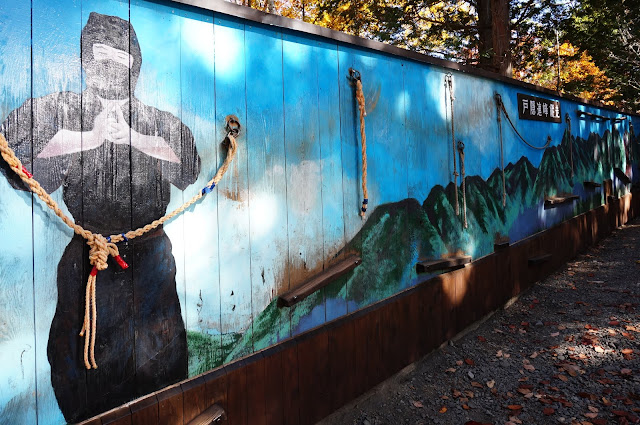 |
| The Ninja House features an outdoor obstacle course, a trick house, a Shuriken shooting range, and a museum |
Day 20 - Look for a local place to get brunch. Walk around randomly at the Sakura Honmachi and Sakae areas. Get dinner at a Yakiniku restaurant that has a Filipino menu and is frequented by Filipino customers. Find way back to Fushimi.
Day 21 - Rush through the train stations to be at the Toyota Kaikan Museum before 10:30am. Enjoy a DIY tour of the museum and a guided tour of their factory. Walk to the nearest supermarket to get a late lunch and some chocolates for take home. Head back to central Nagoya and wait for the shuttle bus to the airport. Pick-up Royce chocolates from the duty-free shop and a light dinner at the convenience store. Depart from Chubu Centrair International Airport (NGO) via Cebu Pacific.
Expenses
Transportation
|
Manila – Osaka via Cebu
Pacific
|
P 2,250
|
|
Nagoya – Manila via Cebu
Pacific
|
P 3,403
|
|
International Travel Tax
|
P 1,620
|
|
Peso Total
|
P 7,273
|
|
|
|
|
7-day JR Pass
|
29,110 yen
|
|
Nankai Airport Limited
Express
|
920 yen
|
|
Osaka One Day Pass
|
800 yen
|
|
Hankyu Railway
|
400 yen
|
|
Bicycle rental @ Kyoto
|
500 yen
|
|
Bicycle rental @ Tokyo
|
300 yen
|
|
Togakushi Bus
|
2,600 yen
|
|
Airport Shuttle bus to
Chubu Airport
|
1,200 yen
|
|
Other transportation @
Osaka
|
420 yen
|
|
Other transportation @
Kyoto
|
1,040 yen
|
|
Other transportation @
Tokyo
|
1,020 yen
|
|
Other transportation @
Hitachi
|
970 yen
|
|
Other transportation @
Yudanaka
|
1,260 yen
|
|
Other transportation @
Suzaka
|
780 yen
|
|
Other transportation @
Togakushi
|
540 yen
|
|
Other transportation @
Nagoya
|
2,860 yen
|
|
Yen Total
|
44,720 yen
|
Accommodation
|
Airbnb @ Tokyo
|
P 957 x 3 nights
|
|
Yudanaka Seifusu @ Yudanaka
|
P 2,070
|
|
Airbnb @ Nagoya
|
P 670 x 2 nights
|
|
Peso Total
|
P 6,281
|
|
|
|
|
Backpackers Hotel Toyo @
Osaka
|
1,600 yen x 3 nights
|
|
Oak Hostel @ Tokyo
|
4,850 yen
|
|
Guesthouse Kura @ Suzaka
|
3,000 yen
|
|
Yen Total
|
12,650 yen
|
Meals
|
Meals @ Osaka
|
3,791 yen
|
|
Meals @ Kyoto
|
13,291 yen
|
|
Meals @ Tokyo
|
10,523 yen
|
|
Meals @ Hitachi
|
1,135 yen
|
|
Meals @ Yudanaka
|
1,498 yen
|
|
Meals @ Suzaka
|
1,594 yen
|
|
Meals @ Togakushi
|
1,228 yen
|
|
Meals @ Nagoya
|
3,512 yen
|
|
Yen Total
|
36,572 yen
|
Activities/Sights
|
Sanjusangen-do @ Kyoto
|
600 yen
|
|
Monkey Park @ Kyoto
|
550 yen
|
|
Hitachi Seaside Park @
Hitachi
|
440 yen
|
|
Snow Monkey Park @ Yudanaka
|
500 yen
|
|
Ninja House @ Togakushi
|
600 yen
|
|
Locker rental
|
550 yen
|
|
Yen Total
|
3,240 yen
|
Summary of Expenses
|
|
Yen
|
Peso
|
|
Transportation
|
44,720
|
7,273
|
|
Accommodation
|
12,650
|
6,281
|
|
Meals
|
36,572
|
|
|
Activities/Sights
|
3,240
|
|
|
Expenses Total
|
97,12 yen
|
P 13,554
|
|
Peso Estimate for 21
days
|
|
P 51,455
|






